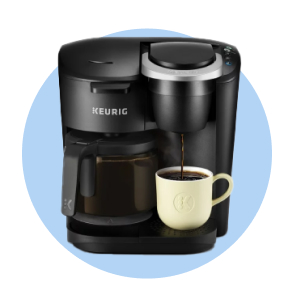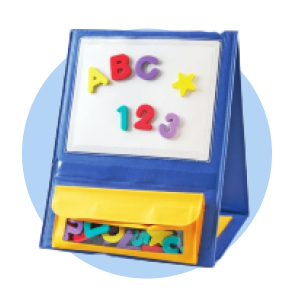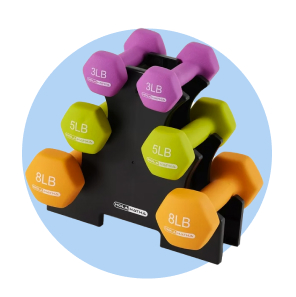
How The Landscape of Senior Living Has Changed Since COVID-19
An evolution in long-term care
COVID-19 changed the world. Suddenly, every organization had to rethink operations to keep employees and the public safe. This is especially true for senior living centers, which suddenly had to find ways to protect their vulnerable populations while continuing to meet their daily needs.
Four years later, the senior living industry looks dramatically different than it did before COVID. However, different doesn’t necessarily mean bad, as new approaches to old problems can often bring positive outcomes for owners and residents alike. Here’s how individual preferences, an evolution in technological approaches and updated living arrangements are changing how seniors live and interact with their communities—in many ways, for the better.

“Aging in place” is becoming more common
An increasingly large portion of the U.S. population will be entering the senior chapter of their lives in the coming years. Census data shows that by 2034, there will be more adults over the age of 65 than children under the age of 18. By 2060, the number of adults over 85 will triple.
This increase in aging populations—primarily driven by the baby boomer generation—has already put a strain on the current senior living infrastructure. A 2023 Wall Street Journal report found there were 600 fewer nursing homes in the U.S. compared to six years prior, making it more difficult for families to find quality care for their loved ones.
Then COVID-19 hit and put an even greater strain on these resources. Reports of employee burnout have made it difficult for nursing homes and senior living facilities to maintain the Centers for Medicare & Medicaid Services (CMS) minimum staffing level requirements.
Additionally, many families are electing to keep aging adults out of nursing homes to protect them from COVID-19 infection—a decision borne out of necessity at the beginning of the pandemic that appears to have long-lasting consequences. As a result, many families are choosing a plan that involves “aging in place” or delaying the transition into a senior living facility until it is medically necessary to do so.
While the financial and medical needs of those aging in place can vary wildly, something like PACE (Program of All-Inclusive Care for the Elderly) shows what a national program for home-based care might look like. This program provides quality, individualized care for seniors while lowering healthcare costs per patient—in some states, as much as $12,000 lower.
Want to learn how Walmart Business can help caregivers and families stock up on must-have supplies? Read How Walmart Business Helps You Save Time & Money for more information.

Embracing technology to tackle old & new challenges
As individual seniors and their families have had to navigate and adapt to a post-COVID reality, senior living centers have had to do the same to keep their residents and employees safe and improve their well-being. For many living centers, technological innovations have provided a path forward during uncertain times.
Of course, mitigating the spread of COVID-19 is of paramount concern, forcing many facility operators to upgrade their air filtration systems. According to one study, improved HVAC (heating, ventilation and air conditioning) methods, like ultraviolet air purification systems, have shown a demonstrable decrease in the probability of infection and actual cases without the need to modify resident behavior.
Beyond the obvious health impacts of COVID-19 infection, the pandemic also exacerbated feelings of loneliness and social isolation among those living in senior centers. While real human contact remains critical, many facilities have embraced virtual meeting technology to allow residents to connect with friends, family and loved ones even if they cannot visit the physical location.
This technology also generated a boom in telehealth options, allowing seniors to speak with a physician and receive care without leaving their residences. It’s been especially helpful for patients living in rural areas who may not have ready access to quality care without lengthy waits or travel times. Many senior centers have installed private areas with computers and vital sign equipment where residents can conduct telehealth sessions with staff nearby to assist if needed.
Read How to Shop for the Best Exercise Equipment for Seniors for tips on how to keep residents fit.
Maintaining community while protecting residents
One of the most difficult challenges for senior centers navigating COVID-19 was continuing to foster a sense of community and togetherness while mitigating the spread of the virus. Updated CMS visitation requirements upended how residents interacted with each other while limiting contact with visitors depending on the severity of current outbreaks.
The initial period of the pandemic saw a shift from large communal gathering areas for eating and recreational activities to highly individualized spaces. As the landscape continues to change, senior living centers continue evolving how they build community while keeping residents safe.
One current architectural trend is the “pocket neighborhood.” Rather than relying on a single, shared facility, these plans create a series of smaller buildings meant to house 10–15 residents. These “neighborhoods” offer private living spaces for individuals, with smaller nooks for spending time with other residents. This option allows facilities to maintain a sense of friendship and belonging while minimizing the risk of exposure to the rest of the facility.
Other innovations include a new reliance on flexible furniture, which allows facilities to convert spaces to accommodate work, dining or leisure as needs arise. Outdoor spaces also allow residents to gather while minimizing the spread of infection, so facilities are finding ways to encourage spending time outside by installing gardens, games and patio furniture.
Check out Walmart Business Stories: Credo Senior Living to find out how Walmart Business can save senior living centers time, money and hassle when stocking up on fresh food.
Better facilities, safer residents
Ultimately, any change or addition to a senior living center should keep the health and well-being of residents in mind. COVID-19 may have been a once-in-a-lifetime disruptive event, but the lessons learned from it can bring about positive outcomes for residents in the decades to come.
Looking for more ways to improve operations? Visit the content hub for marketing tips, financial guides and more.
For your other business needs, sign up for a Walmart Business account to get free curbside pickup1 and free, fast shipping on orders over $35.2 Already have an account? Sign up for a Walmart Business+ membership to save over $500 a year.3


Limited-time offer
Unlock your special promo code
Stay informed on Walmart Business news & get $20 off a $100 purchase!1
1Minimum order of $100. Promo code can be used one time & may not be combined with other offers. Offer not transferable & void where prohibited by law. Customer responsible for all applicable taxes. Offer expires 12/31/2025 at 11:59pm PT. Further restrictions apply. See terms at checkout for details. Promo code offers available in limited quantities. While supplies last.
1 $35 minimum. Restrictions apply.
2 Excludes most Marketplace items, freight and certain location surcharges.
3 Savings based on 1 free $35+ delivery order vs. $9.95 fee and 1 free shipping order under $35 vs. $6.99 fee biweekly, plus 2% Walmart Business Rewards on monthly order >$250 (average value of $400).
Exciting news awaits
Hear firsthand about new products, features & promotions.
By clicking submit, you agree to receive emails about Walmart Business and acknowledge you have read and agreed to our Terms of use and Privacy Policy.











